Types of Basmati Rice From India and Pakistan
Basmati rice is a long-grain fragrant rice from the Indian subcontinent. It is well-known for its delicate flavor and smell and is used in a variety of cuisines across the world. Basmati rice is farmed across the Indian subcontinent, notably in India and Pakistan. The many varieties of basmati rice sources can affect the flavor, texture, and perfume of the rice. In this blog, we will look at the many sorts of basmati rice sources, from India to Pakistan.
Basmati Rice Varieties in India
Basmati rice is a long-grain fragrant rice from the Indian subcontinent. It is well-known for its delicate flavor and smell and is used in a variety of cuisines across the world. Basmati rice is farmed across the Indian subcontinent, notably in India and Pakistan. The many varieties of basmati rice sources can affect the flavor, texture, and perfume of the rice. India is one of the world’s top producers of basmati rice, and the country has a long history of rice growing. The large, thin grains and the rich scent of Indian basmati rice are well recognized. Basmati rice is mainly farmed in India’s northern areas, including Punjab, Haryana, and Uttar Pradesh.

- Pusa Basmati 1121 is one of India’s most popular basmati rice kinds. It features long, thin grains with a delicate flavor and fragrance. It’s frequently seen in biryanis, pulao, and other rice meals.
- Pusa Basmati 1509 is one of India’s most popular basmati rice kinds. It features long, thin grains with a delicate flavor and fragrance. It’s frequently seen in biryanis, pulao, and other rice meals.
- Basmati 386, this basmati rice strain is well-known for its long, thin grains and ability to effectively absorb tastes and fragrances. It’s frequently seen in biryanis, pulao, and other rice meals.
- Pusa Basmati 1718, this basmati rice strain is distinguished by long, thin grains and a sweet scent. It’s frequently used in classic Indian meals like biryani, pulao, and kheer.
- Mahi Sugandha Basmati, this basmati rice strain is distinguished by its long, thin grains and sweet scent. It’s frequently seen in biryanis, pulao, and other rice meals.
Basmati Rice Varieties in Pakistan
Pakistan is also a large producer of basmati rice, which is distinguished by its long, slender grains and delicate flavor. Basmati rice is generally farmed in Pakistan’s Punjab area, which is located in the country’s northeast.
- Super Kernel Basmati is one of Pakistan’s most famous basmati rice kinds. It features long, thin grains with a delicate flavor and fragrance. It’s frequently seen in biryanis, pulao, and other rice meals.
- Basmati 385, this basmati rice strain is recognized for its long, thin grains and its ability to effortlessly absorb tastes and fragrances. It’s frequently seen in biryanis, pulao, and other rice meals.
- PK-386 Basmati, this basmati rice strain boasts long, thin grains and a delicate scent. It is frequently used in traditional Pakistani recipes including biryani and pulao.
- Basmati 198, This basmati rice has a distinct flavor and scent that distinguishes it from other basmati rice variants. Mostly used in traditional Pakistani meals like biryani and pulao.
- Irri-6 Basmati, this basmati rice features long, thin grains and a delicate taste. This is frequently used in traditional Pakistani meals like biryani and pulao.
Difference between Pakistani and Indian Varieties
Basmati rice is a long-grain, fragrant rice farmed in many parts of the Indian subcontinent, including India and Pakistan. While both nations produce high-quality basmati rice, there are significant variances that can affect the flavor, texture, and taste of the rice.

Soil and Climatic Factors
The temperature and the soil conditions in which the rice is cultivated are two of the key variations between basmati rice from India and Pakistan. Indian basmati rice is traditionally cultivated in the Himalayan foothills, where the land and environment are perfect for production. This region’s soil is rich in nutrients and minerals, which aids in the production of high-quality rice with a deep fragrance and flavor. In comparison, basmati rice from Pakistan is primarily farmed in the country’s Punjab province, which is located in the country’s northeast. This region’s soil is sandy and less productive than that of the Himalayan foothills. The climate of the Punjab area, on the other hand, is great for basmati rice growth, with scorching summers and cold winters that give optimum growing conditions for the rice.

Length of Rice
The length of the grain is another distinction between Indian and Pakistani basmati rice. Indian basmati rice is recognized for its long, thin grains, whereas Pakistani basmati rice has shorter grains. The texture of the rice can be affected by the variation in grain length, with Indian basmati rice being somewhat softer and much more delicate than Pakistani basmati rice.
Taste and Aroma of Basmati Rice
The scent and flavor of basmati rice might differ depending on where it is cultivated. Indian basmati rice is noted for its rich, nutty scent and delicate flavor, earning it the title “Queen of Fragrance.” Pakistani basmati rice, on the other hand, has a richer scent and flavor, as well as a somewhat earthy undertone.
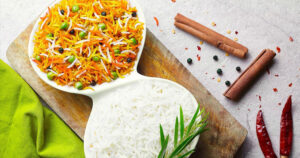
Cooking Methods
While both Indian and Pakistani basmati rice is flexible ingredients that may be used in a variety of cuisines, they are cooked in somewhat different ways. Basmati rice from India is commonly used in classic Indian meals such as biryani and pulao, as well as rice pilafs and salads. Pakistani basmati rice is commonly used in classic Pakistani cuisines like biryani and pulao, as well as kebabs and curries.
Crux
Basmati rice from India and Pakistan are also both high-quality commodities known for their delicate flavor and fragrance. While there are significant distinctions between the two, such as the temperature and soil conditions in which the rice is cultivated, the length of the grain, and the perfume and flavor of the rice, both are adaptable ingredients that may be utilized in a variety of meals. Whether you choose Indian or Pakistani basmati rice, both are terrific choices for any meal. For the best quality Basmati rice visit adnoor.ca
4 Comments
The Best Basmati Rice and Vegetable Recipes - Adnoor
March 21, 2023[…] subcontinent. It is distinguished by its distinctive aroma, delicate texture, and nutty flavor. Basmati rice is commonly used as a side dish or in pilafs, biryanis, and other rice-based meals in Indian, […]
How to Cook Best Basmati Rice Soup - Adnoor
March 21, 2023[…] and easy supper when you don’t have a lot of time to cook. I would strongly suggest the Best Basmati Rice Soup to anybody who likes a substantial and tasty soup. The components are of the highest quality, […]
Learn About the Many Types of Rice Used in Cooking
June 2, 2025[…] Basmati 1121: Extra long, thin grains with a delicate flavor, one of India’s […]




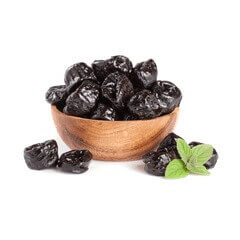
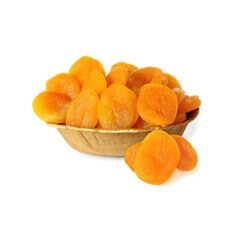
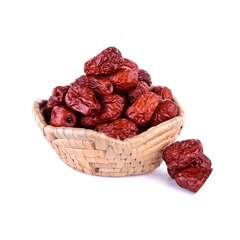
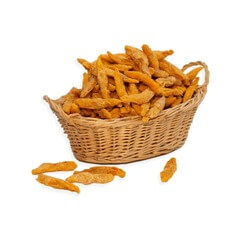
How to cook delicious Basmati Rice and Chicken - Adnoor
March 15, 2023[…] Basmati rice and chicken are a classic and tasty combo. Spices such as cumin, coriander, turmeric, paprika, and cayenne pepper give depth and richness to the dish’s flavor. The addition of chopped tomatoes to the recipe gives the meal a modest tanginess that complements the taste perfectly. The basmati rice with the chicken dish is simple and basic. It just only a few ingredients and can be cooked in one pot, making it a quick and easy supper alternative. This recipe will please your taste buds with the proper blend of tastes and textures. Basmati rice and chicken combine to form a tasty and filling supper. Here’s how to make them together. […]